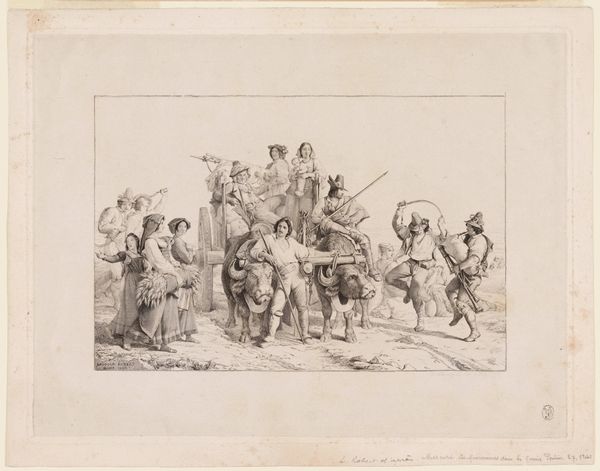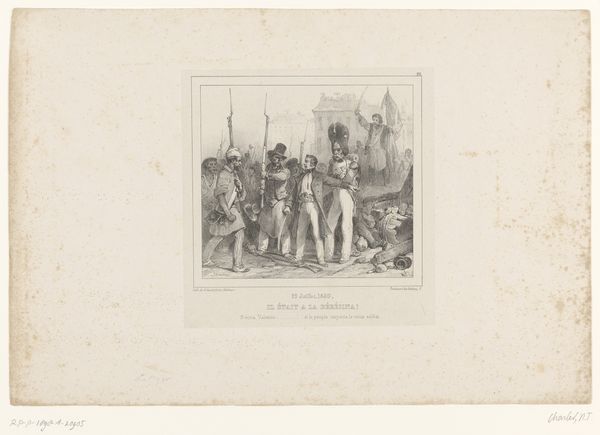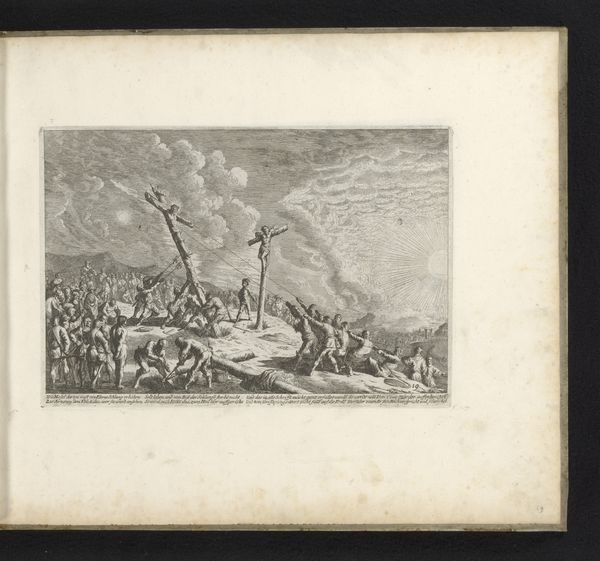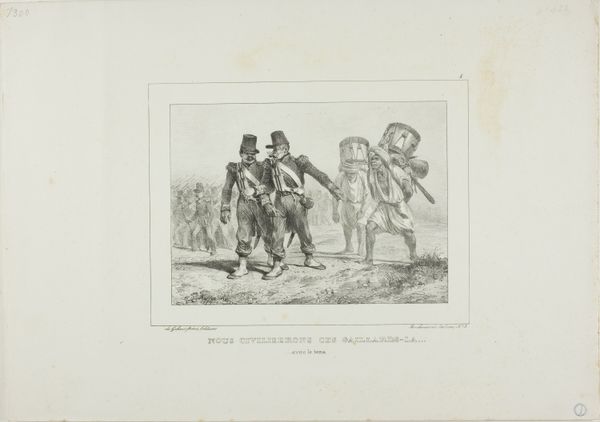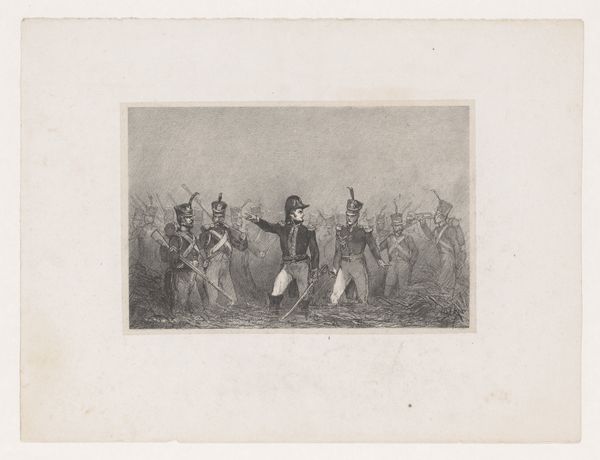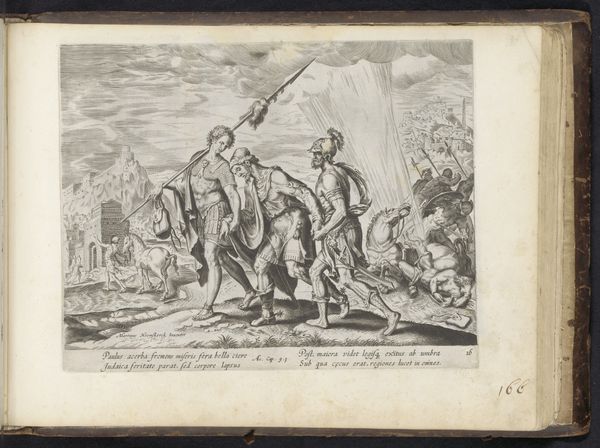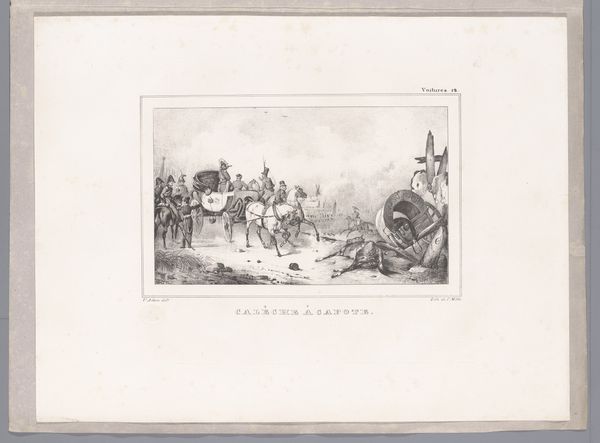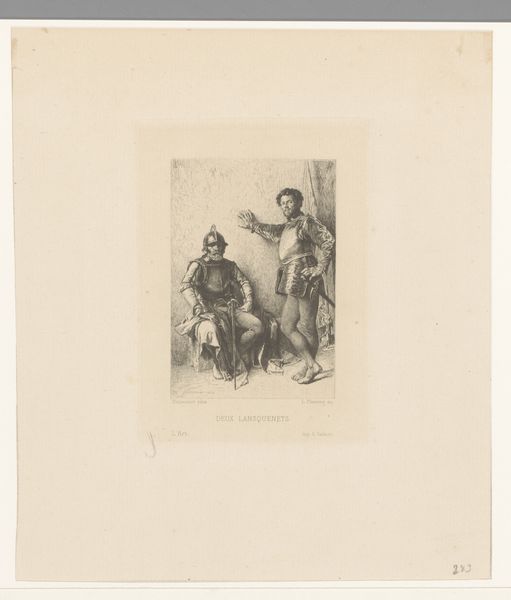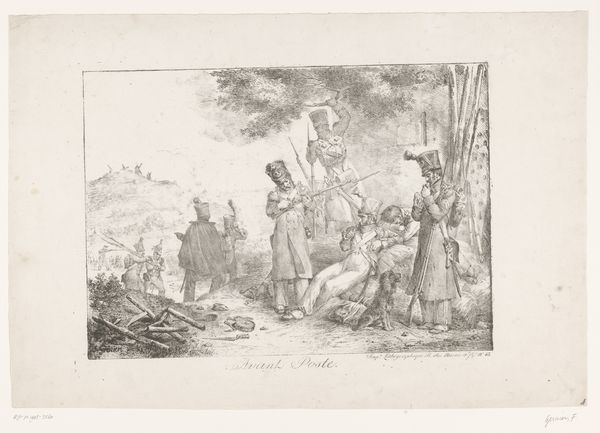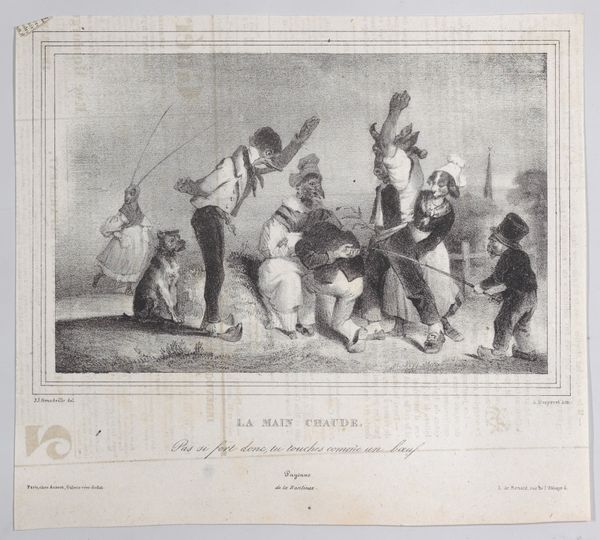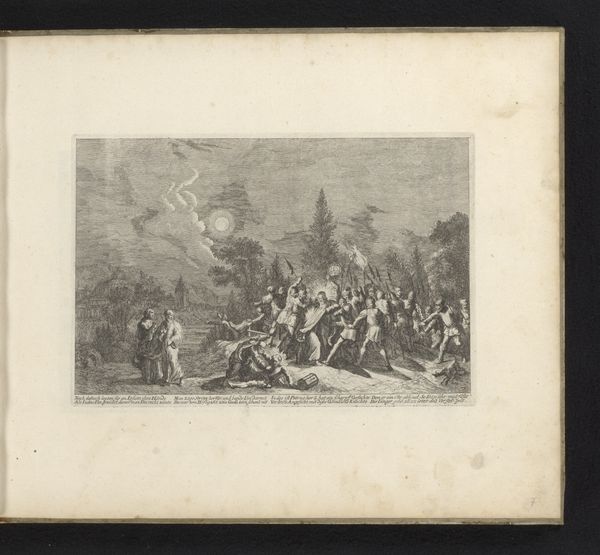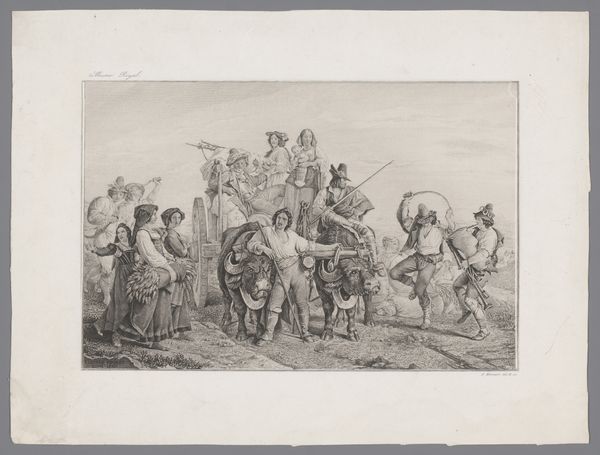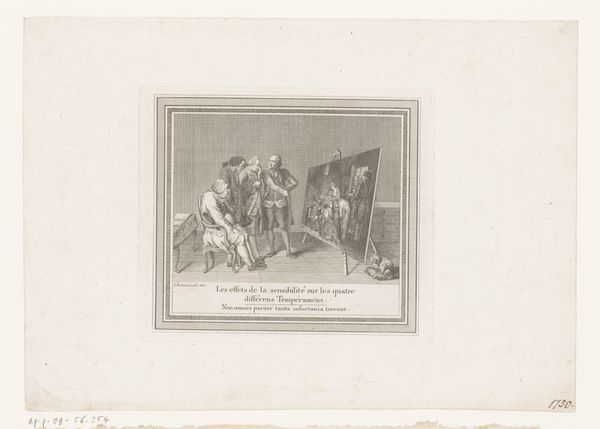
print, engraving
#
baroque
#
ink paper printed
# print
#
old engraving style
#
landscape
#
figuration
#
history-painting
#
engraving
Dimensions: height 218 mm, width 224 mm
Copyright: Rijks Museum: Open Domain
Curator: This stark engraving, created between 1670 and 1682 by Melchior Küsel, is titled “Personification of Despair.” It's an ink on paper print held in the Rijksmuseum. What is your first take on this artwork? Editor: Ominous. Bleak. It immediately strikes me as a commentary on powerlessness. The use of stark black and white, the dramatic lighting...it all adds to the sense of hopelessness. Curator: Indeed. Küsel captures Despair not as a sudden event, but as a state, almost like an inheritance of sorrow. The hunched figure led by what I perceive as a sort of robed, commanding figure is compelling. To me it represents the inheritance of despair through history. Notice the defeated in the background. What does this dynamic suggest to you in terms of societal power? Editor: Absolutely. This isn't merely personal sorrow; it's a despair etched into the social fabric. That dominant figure could symbolize institutions, societal norms, even political systems that perpetuate this hopelessness. The desolate landscape mirrors the inner turmoil, a world stripped bare of comfort. This era was wrought with its fair share of wars, famines, and socio-political upheavals. What about the visual language of desperation being utilized by the artist? Curator: The averted gaze, the stooped posture, even the rough, almost brutal lines used to depict the figures – all resonate with a deep sense of anguish. In cultural terms, it almost plays into this stoic portrayal, like a modern Sisyphus being prodded into an eternal and bleak reality. Also, the symbolic rays of light from above... almost an antithesis to hope in this frame. It almost feels mocking! Editor: Mocking! A valid argument. Or perhaps, those rays represent a lost hope, a promise that is forever out of reach. I see it as an almost bitter commentary. Despair isn’t just felt; it’s imposed, inflicted. Küsel implicates the societal forces at play that condemn people to this state of hopelessness. The print serves as a historical indictment, a visual testament to the crushing weight of despair imposed by structures of power during this historical time frame. Curator: Well, this exploration highlights how despair, while personal, is deeply intertwined with broader societal and historical contexts. The weight of such times is reflected in how this image of Despair resonates even now. Editor: It truly showcases how art can act as a critical lens, urging us to examine the forces that contribute to human suffering, whether then or now.
Comments
No comments
Be the first to comment and join the conversation on the ultimate creative platform.
